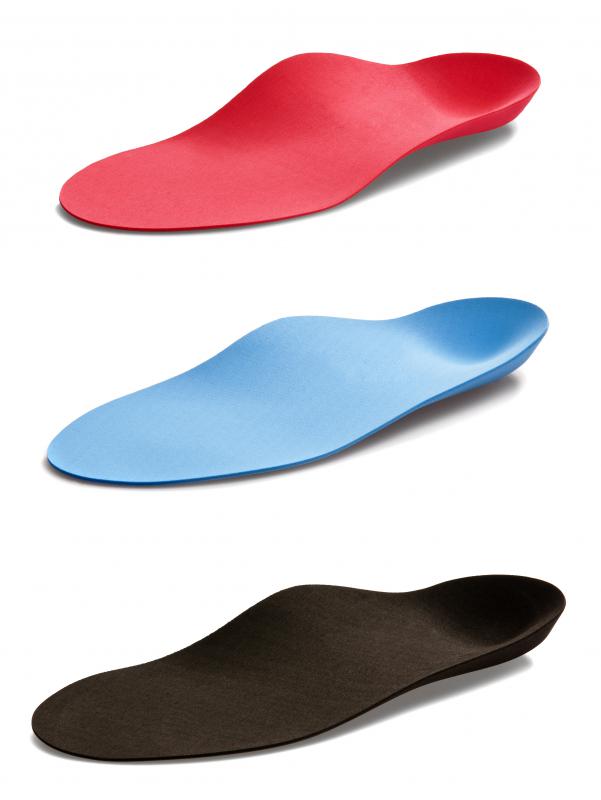At WiseGEEK, we're committed to delivering accurate, trustworthy information. Our expert-authored content is rigorously fact-checked and sourced from credible authorities. Discover how we uphold the highest standards in providing you with reliable knowledge.
How Do I Choose the Best Running Shoes for Pronation?
Choosing the best running shoes for pronation requires that you first decide which type of pronation you have. The shape of the shoe, which can be straight, curved or semi-curved, can vary depending on the type of pronation. Underpronation usually requires stability or motion-control running shoes, while overpronation is best suited to cushioning shoes that allow the foot to rotate inward. Once the shape and type of shoe have been decided, the final choice depends on the purpose of the shoe, because road, trail and race running require different types.
The first step to choosing running shoes for pronation is working out whether you overpronate or underpronate. Overpronation, which involves the foot and ankle excessively rotating inward as the foot hits the ground, is the most common form. In contrast, underpronation is when the foot doesn’t roll inward enough. Both forms of pronation can cause problems throughout the body’s kinetic chain, which is why it’s essential to choose the right running shoes.

When choosing running shoes for pronation, a factor to consider is the shape of the shoes. Straight shoes are best for people who overpronate, while curved shoes are designed for underpronators. If you have a neutral shoe, then a semi-curve is probably the best option. Along with the shape of the shoe, the size also is important. If the shoe is incorrectly fitted, then it can allow more or less pronation than required.

The type of support running shoes for pronation provide is probably the most important factor. Overpronators should buy shoes that support the foot and ankle, preventing any excess pronation. Moderate overpronation can be corrected using standard stability shoes, but severe pronation can often only be stopped with motion-control shoes. Underpronators should choose a cushioning running shoe that helps to absorb the shock of running while allowing the foot to roll inward as much as possible.

Aside from the shape and type of shoe, another important factor is how the shoes are going to be used. If, for example, you plan on running on trails, then trail running shoes for pronation are important. This is because trail runners are more durable and provide a greater amount of traction. On the other hand, high-level race running shoes are designed to be lighter and have less cushioning. These are a good choice if your goal is to run as fast as possible or enter races.
AS FEATURED ON:
AS FEATURED ON:















Discuss this Article
Post your comments